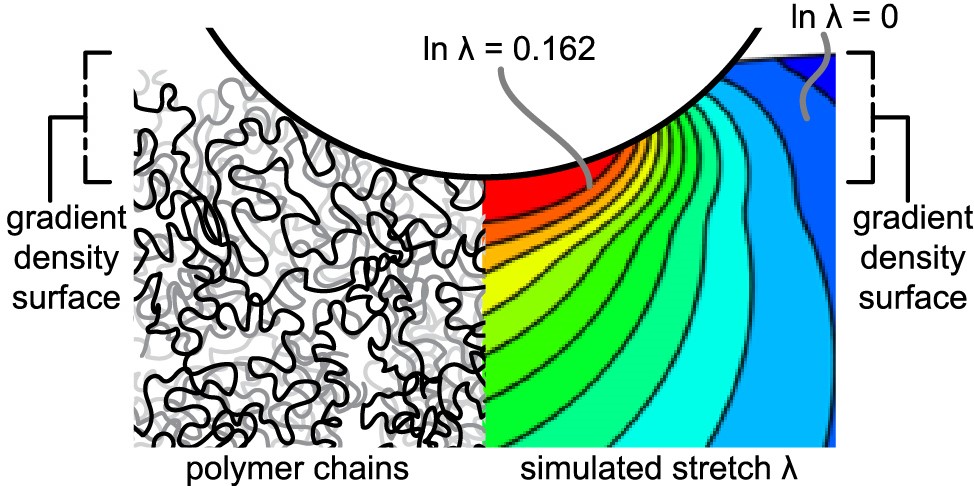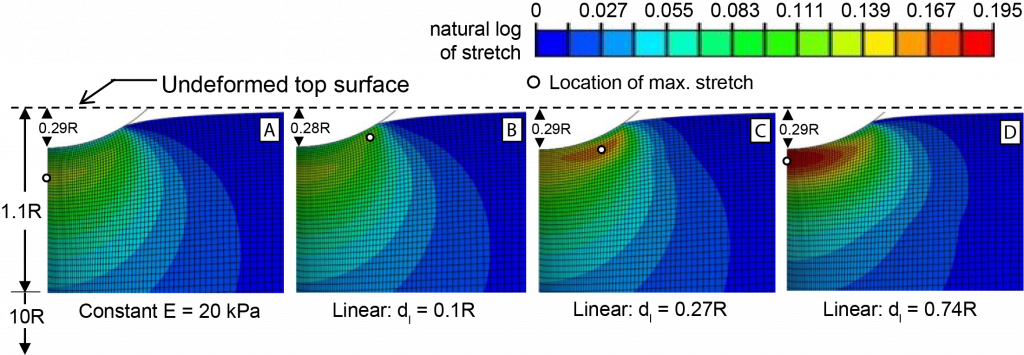I have started many posts this way, but in fact we keep discovering more reasons. I’m thrilled to share that our recent work shows how hydrogel surfaces have an innate structure that allows them to maintain robust low friction: a gradient layer. When you submerge a hydrogel into a water bath, the polymer chains want to swell because they are so hydrophilic (water-loving). The chains at the edge of the hydrogel can swell into the water, but the chains inside the hydrogel are stopped from swelling because they are trapped on all sides by more polymer chains. As this happens across a wide surface, there is a swollen layer that appears. We push on this swollen layer using experiments, but more importantly here, a simulation, so that we can try to guess the structure of the swollen layer. Does the density and stiffness change linearly? Exponentially? Or another way? At the end of the paper we show how people using a probe to push on soft samples might benefit from a more careful interpretation of the force data that they measure! They just might have a gradient layer on the surface.
Read our whole paper here: https://doi.org/10.1021/acs.langmuir.2c00296 (email me or request through ResearchGate if you don’t have access). Congratulations to Hasan for his hard work!
Below you can find an image that we get from the simulation: how much does the hydrogel surface stretch, and where, when it has a gradient layer of lower stiffness at the top. The gradient layer gets thicker from the left image to the right one.


